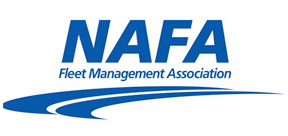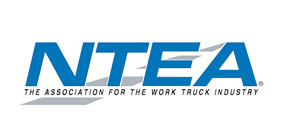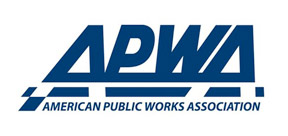Why Tableted Chlorine is Ideal for Remote Booster Stations and Wells

Analyzing municipal chlorination alternatives for efficacy, safety and simplicity
By J. Gary Miller, Senior Account Executive, Westlake Water Solutions
Municipalities are discovering tableted chlorination at remote well sites, booster stations and elevated storage tanks as a solution for maintaining proper chlorine residuals and overcoming concerns associated with the use of bleach and gas.
Take Spartanburg Water in South Carolina, for example. They are now utilizing automated calcium hypochlorite systems at their Cow Pens and Croft booster station locations. Additionally, Long Island’s Westbury Water District utilizes seven systems on its wells.
According to Spartanburg Water Facilities Maintenance Manager Scott Duff, Accu-Tab® 3075 units installed by Southeastern Systems Inc. of Conyers, Ga., are providing a safer alternative from its previous chlorine gas solution, while also reducing the number of times his team has to make the 14-mile trip from the treatment plant to the remote booster stations.
“Gas requires special attention. If a leak were to develop, you need special kits on hand to stop it,” said Duff. “With Accu-Tab, you get away from that concern, not to mention when we went from gas to a cal-hypo chlorine solution, it improved the water’s pH level.”
Forget going the distance when it comes to remote sites
The chlorination system used at the main plant may not be the best choice for remote booster stations and wells. In short, chlorination is not a one-size-fits-all solution.
And while maintaining consistent chlorine residuals throughout the water distribution system is essential for ensuring water quality and safety, variations in chlorine levels are common. This is especially true in systems with long disinfection transport distances or in sections with low water turnover.
That’s why municipalities sometimes employ booster station chlorination.

Yet, chlorination at remote, unmanned sites, such as booster stations, distant wells and elevated storage tanks, pose their own special challenges. These include chemical transportation, storage, degradation of chlorine residuals and risks associated with potential chlorine gas releases at unstaffed locations.
These factors raise different chlorine safety issues that can be more difficult to address than those at the primary manned treatment plant. It is also important to note that the majority of these remote applications require a lower volume of chlorine, making the dosing specificity more challenging.
Since chlorine is usually stored at booster stations and wells for several weeks at a time, its strength or stability is critical. This leads to weighing the relative advantages and disadvantages of the different forms of chlorine and methods of chlorine addition, as they apply to the specific needs and safety concerns.
Among all chlorination options, calcium hypochlorite tablet chlorination provides a wide range of stability and safety benefits, along with storage and delivery elements that make it an attractive option for use in remote location chlorination.
Let’s see why!
Gas chlorine questions
Chlorine gas cylinders contain 100% available chlorine, and have the lowest cost of any form of chlorine. When using cylinders in remote sites, considerations include cylinder scales, self-contained breathing apparatuses (SCBA) and process safety management (PSM).
Utilities often have concerns about storing a potentially hazardous gas at an unstaffed site, and there is a need to write an emergency plan and provide ongoing safety training. The emergency response time in the event of cylinder leaks must also be considered. Thus, for some utilities, chlorine gas is a major concern for applications at remote, unstaffed locations.
Sodium hypochlorite concerns
Sodium hypochlorite (bleach) is often the next alternative considered in place of chlorine gas. Bleach requires care when handling and secondary containment to prevent spills or leaks to the environment.
Liquid bleach is bulky to handle, while corrosion and scale problems with bleach necessitate frequent maintenance and repairs of metering pumps and tubing. Additionally, oxygen outgassing from concentrated bleach solutions can result in gas blockage to feed lines and pumps. In severe cases, lines may rupture under the pressure of trapped gas.
More importantly, sodium hypochlorite does not maintain its original 10-15% strength over extended periods of time, especially in the presence of heat and sunlight. The daily loss of strength in bleach storage containers means there will be a corresponding decline in free chlorine residuals in the distribution system.
The case for cal-hypo
Today, cal-hypo is available in 3-inch round erosion-tablet form. When used with a cal-hypo delivery system, the combination offers key advantages that include more consistent chlorine delivery, ease of transportation, improved safety and shelf-life stability when compared to bleach.
Not only are cal-hypo erosion tablets easier to transport than bleach, but they also help improve safety concerns around leaks and need for containment structures. Additionally, cal-hypo tablets provide better chlorine delivery consistency due to a lower degradation in storage than bleach.

Westlake Accu-Tab® SI cal-hypo erosion-tablets are packaged in 60-pound pails compared to 150-pound gas cylinders or 575-pound drums of bleach. These NSF/ANSI Standard 60 certified tablets, along with the Accu-Tab® NSF/ANSI Standard 61 certified chlorination system, deliver a more neutral pH level (~9) compared to sodium hypochlorite (~13) with no spill containment necessary, and more precise and consistent chlorination control. And, converting from bleach or gas over to an Accu-Tab feeder system isn’t complicated.
Here’s how it works
Before the chlorinated water is injected into the distribution line, a side stream of water flows through the chlorinator and contacts only the bottom of the lowest tablets inside the unit. Since the surface area for the water contact is a constant, the tablets erode at a predictable rate based on the adjustable-flow setting.
The chlorinated water is collected in a small internal tank and is then injected into the distribution water line by means of a properly sized pump. The units can be controlled manually or through the same control schemes used with the other forms of chlorine, such as residual, flow pacing and compound loop. Including the pump, there are only two moving parts, so the tablet chlorinators require very little maintenance and can run unattended for days at a time.
Final say from Spartanburg Water
“Accu-Tab is a reliable solution,” said Duff. “When we had a gas solution, we had to visit our booster stations every day. Now we only have to visit the chlorine booster stations every two to three days to add tablets.”
Next Article: Rolling along: Complete renovation of west Beach Marina in Clearwater overcomes challenges to stay on schedule


